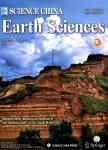Contributions of moisture sources to precipitation in the major drainage basins in the Tibetan Plateau
Contributions of moisture sources to precipitation in the major drainage basins in the Tibetan Plateau作者机构:Engineering Research Center of Eco-environment in Three Gorges Reservoir RegionYichang 443002China College of Hydraulic and Environmental EngineeringChina Three Gorges UniversityYichang 443002China State Key Laboratory of Tibetan Plateau Earth SystemResources and Environment(TPESRE)Institute of Tibetan Plateau ResearchChinese Academy of Sciences(CAS)Beijing 100101China University of Chinese Academy of SciencesBeijing 100101China CAS Center for Excellence in Tibetan Plateau Earth SciencesBeijing 100101China Key Laboratory of Water Cycle and Related Land Surface ProcessInstitute of Geographic Sciences and Natural Resources ResearchChinese Academy of SciencesBeijing 100101China Key Laboratory of Geographic Information Science(Ministry of Education of China)East China Normal UniversityShanghai 200241China State Key Laboratory of Simulation and Regulation of Water Cycle in River BasinWater Resources DepartmentChina Institute of Water Resources and Hydropower ResearchBeijing 100038China
出 版 物:《Science China Earth Sciences》 (中国科学(地球科学英文版))
年 卷 期:2022年第65卷第6期
页 面:1088-1103页
核心收录:
学科分类:07[理学] 08[工学] 081501[工学-水文学及水资源] 0815[工学-水利工程] 0706[理学-大气科学]
基 金:supported by the Second Tibetan Plateau Scientific Expedition and Research Program (Grant Nos. 2019QZKK0201 & 2019QZKK020705) the National Natural Science Foundation of China (Grant Nos. 41988101 & 41871057) "Strategic Priority Research Program" of Chinese Academy of Sciences (Grant No. XDA20060202)。
主 题:Tibetan Plateau Precipitation Moisture sources Westerlies Indian summer monsoon Local recycling
摘 要:Tracking and quantifying the moisture sources of precipitation in different drainage basins in the Tibetan Plateau(TP)help to reveal basin-scale hydrological cycle characteristics under the interactions between the westerlies and Indian summer monsoon(ISM) systems and to improve our understanding on the mechanisms of water resource changes in the ‘Asian Water Tower under climate changes. Based on a Eulerian moisture tracking model(WAM-2) and three atmospheric reanalysis products(ERA-I, MERRA-2, and JRA-55), the contributions of moisture sources to the precipitation in six major sub-basins in the TP were tracked during an approximately 35-year period(1979/1980–2015). The results showed that in the upper Indus(UI),upper Tarim River(UT), and Qaidam Basin(QB), the moisture sources mainly extended westward along the mid-latitude westerlies to the western part of the Eurasian continent. In contrast, in the Yarlung Zangbo River Basin(YB), inner TP(ITP), and the source area of three eastern rivers(TER, including the Nujiang River, Lancang River, and Yangtze River), the moisture sources extended both westward and southward, but mainly southward along the ISM. In winter and spring, all of the sub-basins were dominated by western moisture sources. In summer, the western sources migrated northward with the zonal movement of the westerlies, and simultaneously the southern sources of the YB, ITP, and TER expanded largely toward the Indian Ocean along the ISM. In autumn, the moisture sources of the UI, UT, and QB shrank to the western sources, and the moisture sources of the YB, ITP, and TER shrank to the central-southern TP and the Indian subcontinent. By quantifying the moisture contributions from multiple sources, we found that the terrestrial moisture dominated in all of the sub-basins, particularly in the UT and QB(62–73%). The oceanic contributions were relatively high in the UI(38–42%) and YB(38–41%). In winter, evaporation from the large western water bodies(such as the Mediterranean, Red Sea, and Persian Gulf) was significantly higher than that from the continental areas. This contributed to the peak(valley) values of the oceanic(terrestrial) moisture contributions to all of the subbasins. In summer, the terrestrial moisture contributions to the UI, UT, and QB reached their annual maximum, but the abundant oceanic moisture transported by the ISM restrained the appearance of land source contribution peaks in the YB, ITP, and TER,resulting in almost equal moisture contributions in the YB from the ocean and land.



